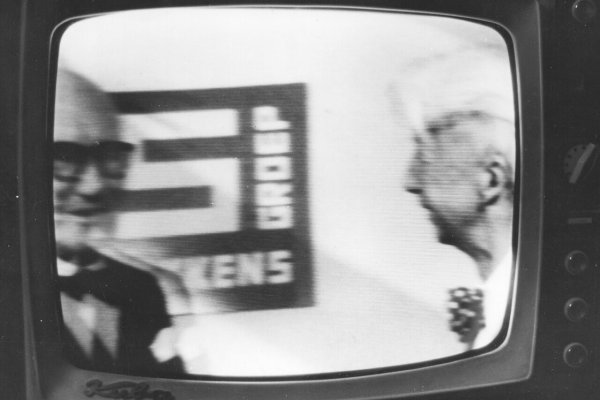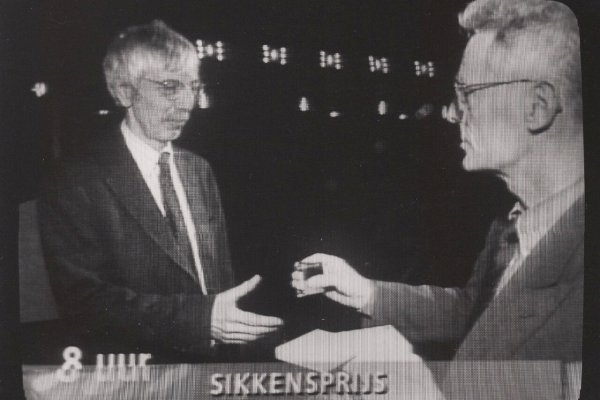History
The history of the Sikkens Foundation starts with the foundation of the Sikkens Prize by the Sikkens management in 1959. Sikkens, a paint and varnish brand established in 1792, became a part of the AkzoNobel corporation in the 1960s. In 1972, all the Sikkens Prize activities and initiatives were joined together in the autonomous Sikkens Foundation.
The 1950s and 1960s: a new dawn for the arts
The man behind the Sikkens Foundation was chemist August M. Mees, who started working at Sikkens in 1924. Under his supervision, the paint factory underwent some essential changes and expansions. After the war, Mees explicitly starts aiming his company policy towards the apparent new dawn for the arts. Sikkens sells paint, paint is colour and after the bleak years of war and post-war, colour is making a comeback. A new generation of artists and architects are invoking the legacy of De Stijl, including heroes like Gerrit Rietveld, Theo Van Doesburg and Bart van der Leck. Colour represents space, and it is this principle that proves to be the starting point for many different artists and architects in the 1950s and 60s.

Colourful ideas
Sikkens’ very first exhibition on the subject of colour, made in cooperation with the Goed Wonen (Good Living) Foundation in 1957, is very well received. Sikkens decides to create a colour range from contributions by artists affiliated to the Liga Nieuw Beelden (1955-1969). For them, colour is a key factor in trying to achieve a synthesis of architecture and the visual arts. The colour range is promoted through the ‘Colour’ exhibition at the Stedelijk Museum. On this occasion, August Mees announces his plans for the Sikkens Prize, leading to its definitive inauguration in 1959.
Mees’ initiative is the result of, on the one hand, his interest in the visuals arts, and on the other hand, his vision of his own company, which focuses on the production and selling of paint. The prize is intended as a tribute to those artists, architects and designers who have created a work in which a synthesis of color and space is achieved.

The early years of the Sikkens Prize
The first few years focus mainly on the function of colour, the way it effects the environment and human behaviour, and its methodical application. By the late 1960s, the Sikkens Foundation is inspired to change its course due to developments in society. The Sikkens Prize jury feels that the Sikkens Prize should be socially relevant. In the early 1970s, the Sikkens Prize merges with the international Talens Prize, a prize that up to this point has only been awarded twice: to Willem de Kooning (1968) and Richard Hamilton (1970. The name of the Sikkens Prize remains the same, but the emphasis is moved from laudation to stimulation. The Prize’s central aim is formulated as follows: “To stimulate those social, cultural and scientific developments in society in which colour plays a specific part.”

New developments
The Sikkens Prize Foundation is officially founded on 18 July 1972. The relatively informal connection to the company is given a distinct status as well as financial footing. In line with the new, expanded formula, the board shifts its attention to colour as a universal phenomenon. Over the following years, the Mondrian Lecture is brought to life and the prize is given the physical shape of a glass prism designed by Carel Weeber. In a 1987 article change, the Sikkens Prize Foundation is rebranded the Sikkens Foundation.